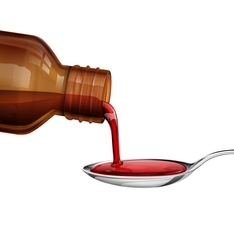|
Spring 2018, Vol. 1

 The state fiscal year (SFY) 2018 budget will be closed out as the Oklahoma Legislature passed measures in special session to reduce agency budgets and appropriate additional funds to the Oklahoma Health Care Authority (OHCA) to replace lost federal funding for medical schools. Budget hearings for SFY 2019 have been held as the Legislature begins looking toward funding the next year of state government.
In addition to the budget, legislators are considering other bills during this spring’s regular legislative session. March 1 was the deadline for bills to be heard in their chambers of origin. Legislators have until March 15 to hear those bills on the floor. If passed, the bills can be sent to the opposite chamber for consideration.
|
Medicaid work requirements executive order
In accordance with Governor Fallin’s March directive, the
OHCA will begin working on a waiver seeking
approval from the Centers for Medicare & Medicaid Services (CMS) to
implement work requirements for the Medicaid program.
Back to top

Following months of speculation, the OHCA is pleased to inform you that on Jan. 22,2018, Congress reauthorized funding for the Children’s Health Insurance Program (CHIP). OHCA uses CHIP funds to operate the Soon-to-Be-Sooners program and to cover children under Insure Oklahoma Employer-Sponsored Insurance (ESI - Child).
Previously we posted a global message informing you that these CHIP-only programs were in jeopardy of termination without the renewal of funding, meaning your patients would lose eligibility. The reauthorization on January 22 means those terminations will not happen. Both STBS and ESI – Child will continue without interruption.
If you or your patients would like to learn more about CHIP, please visit www.okhca.org/chip for the latest information.
Back to top

 Two provider types have contracts set to expire in the next few months:
- Behavioral health practitioners under supervision (Expires May 31)
- Durable medical equipment and/or medical supplies (DME)/Pharmacy providers (Expires June 30)
To avoid a disruption in service to our members, the OHCA encourages providers to renew early. The provider types listed above can log on to the secure OHCA Provider Portal to start renewing their contracts 75 days prior to the expiration date.
AS A REMINDER:
The OHCA has amended its DME contracts. This change allows DME providers who also have pharmacy contracts to have both contracts expire on the same date - June 30, 2018.
If you have any questions, please contact us at 800-522-0114, option 5.
Back to top
|

SoonerCare coverage for former foster care youth
Did you know?
Beginning in
2014, states were asked to begin covering youth who were in state custody
(foster care) on their 18th birthday until age 26, regardless of
income. Even if they have primary insurance coverage through work or another
provider, SoonerCare can still be secondary insurance, which will help lower
out-of-pocket costs.
In addition, individuals
who aged out of foster care prior to 2014 and are currently under age 26
are also eligible to apply.
 |
|
Care coordination payments update
Effective Jan. 1, 2018, OHCA began to only pay care coordination fees for members who have visited their assigned provider within the past 15 months. This includes Insure Oklahoma providers.
To assist in identifying members who have not established a provider-patient relationship, OHCA has made available to medical home providers a listing of members who have either not established this relationship or are within 45 days of reaching the 15-month mark. This report is called the “Initial Visit Report for Care Coordination Payment” and is located under the Financial tab in the secure Provider Portal.
|
Reminder: 2018 Coding changes
OHCA reviews changes, additions and deletions of both the Healthcare Common Procedure Coding System (HCPCS) and Current Procedural Terminology (CPT) codes recommended by the Centers for Medicare & Medicaid Services (CMS) and the American Medical Association (AMA) each year. Multiple changes went into effect on Jan.1, 2018, and it is important to note the following:
Mammography services –The 2017 CMS G-codes for diagnostic and screening mammograms and bundled computer-aided detection (G0202, G0204 and G0206) have been deleted. Providers should now use one of the following codes to describe these services:
77065 Diagnostic mammography, including computer-aided detection (CAD) when performed; unilateral;
77066 Diagnostic mammography, including computer-aided detection (CAD) when performed; bilateral; or
77067 Screening mammography, bilateral (2-view study of each breast), including computer-aided detection when performed.
Therapy services – CPT code 97532 has been deleted. The OHCA will recognize CMS G-code G0515 (development of cognitive skills to improve attention, memory, problem solving [includes compensatory training], direct [one-on-one] patient contact, each 15 minutes). Please note, G0515 will be covered for members aged 0-20 only and will require prior authorization.
Back to top

 Give your SoonerCare knowledge a tune-up!
Don't forget! The spring 2018 SoonerCare Provider Training Workshops kick off on May 1 in Durant. OHCA will host these trainings in five locations across the state and highly recommends that all providers attend a workshop in their area.
- Durant - May 1
- Tulsa - May 9 and 10
- Lawton - May 17
- OKC - May 23 and 24
- Guymon - June 20
Learn the keys to navigating SoonerCare expertly. Visit the provider training page of our website for the latest registration and course information.
Back to top
|

Drug safety updates: Loperamide, codeine, hydrocodone

Loperamide
In January 2018, the U.S. Food & Drug Administration
(FDA) took new
steps to encourage safer use of the easily accessible anti-diarrheal drug
loperamide. The FDA is moving to use blister packs and other single-dose
packaging and to limit the number of doses per package. Loperamide is available
by prescription at a dose of 16mg/day and over-the-counter (OTC) at a dose of
8mg/day. However, some patients are turning to much higher doses of loperamide
to induce its euphoric effects. The increase in abuse has been attributed to
loperamide’s OTC availability, low cost and lack of social stigma. It has been
called “the poor man’s methadone.”1
Recent reports show an alarming
increase in the number of loperamide-associated cardiac arrhythmias resulting in
patient fatalities.2 Loperamide blood levels for some patients were
77-140 ng/mL; the therapeutic range is 0.24-3.1 ng/mL. The Oklahoma Center for
Poison & Drug Information reported 31 patient cases involving loperamide in
2017, a 63 percent increase from 2016, and a 66 percent increase from 2015.3
The FDA recommends no more than
two days of OTC loperamide treatment; patients should contact their health care
provider for longer courses.

Health care providers should
counsel patients regarding the risk of cardiac events, identify any current
medications that may introduce additive cardiac risk, and discontinue
loperamide if abuse, misuse or toxicity is suspected. Some patients may require
additional drug therapy, electrical pacing or cardioversion to correct
resultant arrhythmias.
Patients are advised to call 911
if a person taking loperamide experiences:
- fainting,
- rapid heartbeat or irregular heart rhythm,
and/or
- unresponsiveness.
For calls of a less emergent
nature, patients and/or providers are advised to contact the Oklahoma Center
for Poison & Drug Information at 800-222-1222.
Codeine and Hydrocodone
Also in January, the FDA strengthened the labeling
for cough and cold medications containing codeine and hydrocodone. These
medications are now limited to use in adults only, aged 18 years and older. These products are no longer indicated for
use in children.
Health care providers should
counsel parents and patients regarding the self-limiting nature of most upper
respiratory infections. Most pediatric cough does not require treatment and OTC
products are available for use when necessary. Currently OTC cough and cold
medications are not covered for members insured through SoonerCare. (Providers
may access a list of
covered OTC products on our website.) Parents and caregivers should
be advised of the significant risks associated with use of codeine for
pediatric patients, even without a prescription.
|

As noted in previous FDA
communications,4 women who are breastfeeding should avoid using
codeine and tramadol due to potential harm to infants. Under Oklahoma Pharmacy Law 475:30‐1‐14, 160 milligrams of codeine may be dispensed
to patients aged 18 and over, without a prescription, if the patient has not received an equivalent amount of codeine,
morphine or opium within the last 48 hours.5
Please contact
Jacki Travers, Pharm.D, at jacki-travers@ouhsc.edu
or 405-271-5935 for more information or to schedule a no-cost CARE visit on
current recommendations for evidence-based treatment of upper respiratory
infections.
References
- Louis
CS. Addicts Who Can’t Find Painkillers Turn to Anti-Diarrhea Drugs. N Y Times. https://www.nytimes.com/2016/05/11/health/imodium-opioid-addiction.html.
Published May 10, 2016. Accessed Feb. 15, 2018.
- Eggleston
W, Clark KH, Marraffa, JM. Loperamide Abuse Associated With Cardiac
Dysrhythmia and Death. Ann Emerg Med. 2017; 69(1):83-96. http://www.annemergmed.com/article/S0196-0644(16)30052-X/fulltext.
Accessed Feb. 15, 2018.
- Oklahoma
Center for Poison & Drug Information. Toxic Exposure Surveillance System.
January 18, 2018.
- U.S.
Food & Drug Administration. FDA Drug Safety Communication: FDA restricts
use of prescription codeine pain and cough medicines and tramadol pain
medicines in children; recommends against use in breastfeeding women. Published
April 10, 2017. https://www.fda.gov/Drugs/DrugSafety/ucm549679.htm.
Accessed Feb. 15, 2018.
- Oklahoma
State Board of Pharmacy. 2016 Oklahoma Pharmacy Law Book. https://www.ok.gov/pharmacy/Laws_&_Rules/Oklahoma_Pharmacy_Law_Book/index.html.
Published Sept. 7, 2016. Accessed Feb. 15, 2018.
Back to top
|
Long-term
use of proton pump inhibitors
The use of
proton pump inhibitors (PPIs) in non-institutionalized adults in the United
States doubled between 1999 and 2012, from 3.9 percent to 7.8 percent. During
that same period, the number of studies reporting PPI-related adverse reactions
also doubled (Farrell et al., 2017).
Although
generally considered safe, several studies have shown evidence of uncommon but
potentially serious adverse reactions associated with long-term PPI use. Among
these reactions are increased risk of kidney disease, dementia, bone fractures,
infections, micronutrient deficiencies and gastrointestinal malignancies
(Farrell et al., 2017). Because
of increased utilization of PPIs and reports of serious adverse effects due to
long-term use, a guideline has been developed to help prescribers safely taper
or discontinue PPIs in patients. Canadian Family Physician published this
deprescribing guideline, available at www.ncbi.nlm.nih.gov/pmc/articles/PMC5429051/.
In
addition, the American Gastroenterological Association (AGA) released a
clinical practice update in 2017 that reviews the risks and benefits of
long-term PPI use. The update also provides best practice recommendations. An
abstract is accessible at https://www.ncbi.nlm.nih.gov/pubmed/28257716.
For a list of OHCA-approved PPIs, please visit the Pharmacy section of our website.
References
Farrell B, Pottie K, Thompson W, Boghossian T, et al. Deprescribing proton pump
inhibitors: Evidence-based clinical practice guidelines. Can Fam Physician.
2017; 63: 354-65.
Freedberg
D, Kim L, Yang Y. The Risks and Benefits of Long-term Use of Proton Pump
Inhibitors: Expert Review and Best Practice Advice From the American
Gastroenterological Association. Gastroenterology. 2017 Mar, 152(4): 706-715.
Back to top

The EHR
Incentive Program is now for any returning eligible
professionals (EPs). EPs who have not participated in the program
prior to 2016 are no longer able to participate in the program.
Participation
year 2017 is 90-day reporting period with the deadline of March 31, 2018. The anticipated Program Year 2018 start date is April
1, 2018.
Any eligible hospital participating in the
EHR Incentive Program must attest consecutive years. They are no longer able to
skip a year.
If you have
any questions or concerns regarding this program, please contact the EHR
Incentive Team at EHRIncentive@okhca.org or by phone at 405-522-7347. You can
also visit us online at www.okhca.org/ehr.
Back to top

 For more than 20 years, OHCA has provided quality health care benefits for Oklahoma's most vulnerable populations. Read about our latest efforts and successes in the 2017 OHCA Annual Report, now available online. The report features member stories and Fast Facts, as well as many helpful infographics and stats on our programs, services and provider network. For those seeking more in-depth information, the agency Primer has recently been updated and is also available on our website.
Please visit www.okhca.org/reports to download PDFs of these reports and check out other agency studies, evaluations and more.
Back to top
|


OHCA Dental Manager Tracy Matthews and Dental Analyst Sara
Gillum recently participated in the annual Oklahoma
Mission of Mercy (OkMOM) event. OkMOM is a clinic designed to meet the
oral health needs of Oklahomans by providing free dental care to patients who are
either uninsured, under-insured or simply do not have regular access to dental
care. From screenings to extractions, more than 13,490 patients have received
dental services at OkMOM since 2010.
This year, more than 950 patients received treatment with
the assistance of more than 1,390 volunteers, which included Matthews and Gillum. On average, each patient received
$1,210 in donated care - an OkMOM record.
OHCA Dental Services staff members have devoted their time to this effort for several years. Matthews participated for the sixth time in 2018; Gillum has volunteered for the last eight years.
Back to top
|

OHCA Provider Helpline: 800-522-0114
|